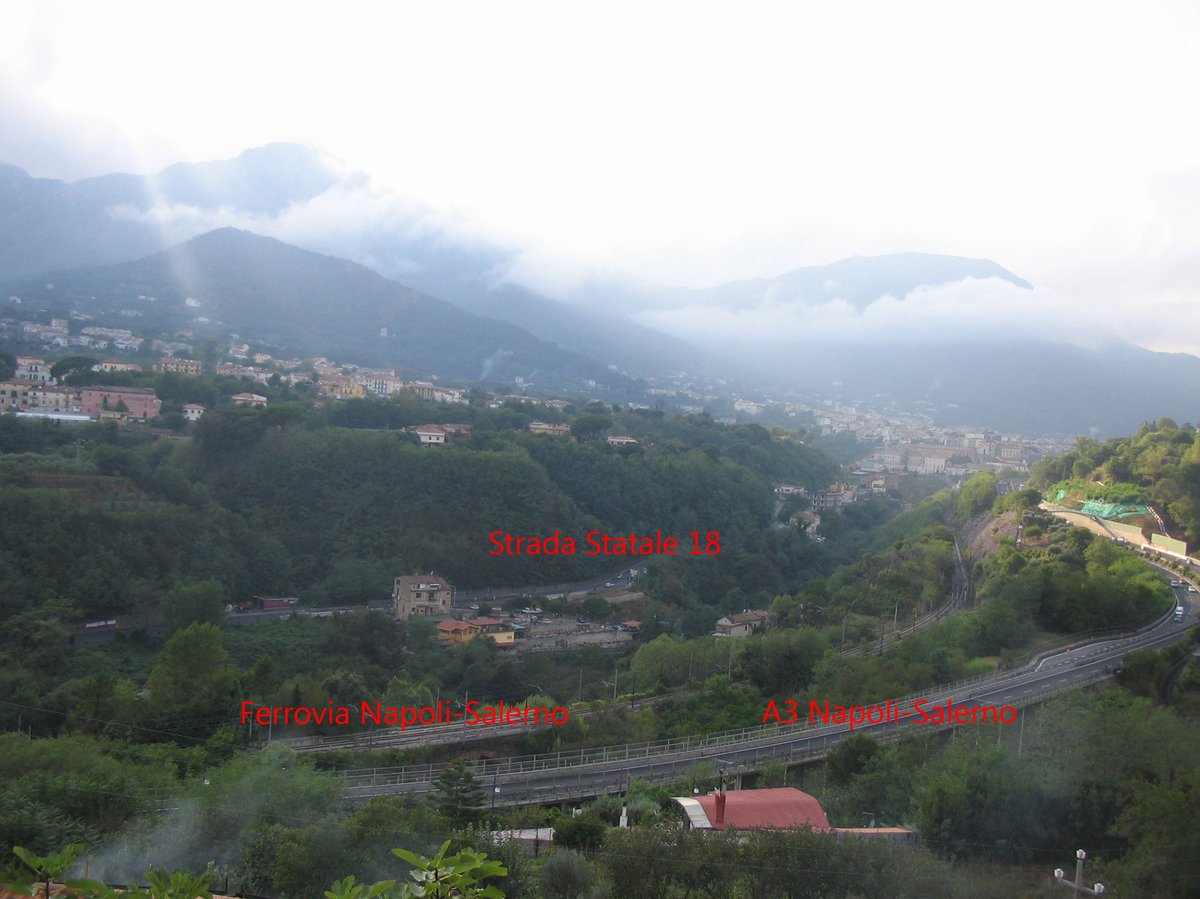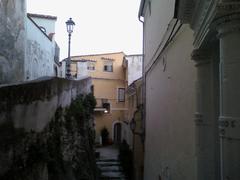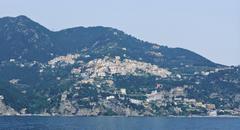
Molina Vietri Sul Mare Italy: Visiting Hours, Tickets, and Travel Guide
Date: 15/06/2025
Introduction
Nestled in a lush valley at the base of the Lattari Mountains, Molina is a tranquil hamlet (frazione) of Vietri sul Mare on Italy’s celebrated Amalfi Coast. Molina offers a distinctive experience, away from the bustling tourist hotspots, revealing the region’s industrial roots, artisanal traditions, and scenic hiking trails. Historically powered by the Bonea stream, Molina’s medieval watermills were central to grain milling, textile production, and the ceramics craft for which the area is now world-renowned. With evocative stone architecture, winding alleys, and proximity to nature, Molina invites exploration into a lesser-known, authentic side of the Amalfi Coast.
This comprehensive travel guide details Molina’s history, cultural significance, major attractions, practical visitor information, and travel tips. Whether your interest lies in ceramics, hiking, local gastronomy, or history, Molina promises an enriching journey into the heart of Campania.
For further planning, see resources like Portale Ospitalità Vietri, Authentic Amalfi Coast, and Italy Magazine.
Table of Contents
- Introduction
- Origins and Etymology
- Medieval Development and Economic Significance
- Social and Cultural Life
- Notable Historical Events
- Molina’s Role in Vietri sul Mare’s Ceramic Tradition
- Modern Era and Current Cultural Significance
- Visitor Information
- Key Landmarks and Points of Interest
- Molina in the Broader Amalfi Coast Heritage
- Frequently Asked Questions (FAQ)
- Conclusion and Call to Action
1. Origins and Etymology
Molina’s name and early growth stem from the “mulini” (water mills) once powered by the Bonea stream (Portale Ospitalità Vietri). Its valley setting provided the ideal environment for water-powered industries, fostering a thriving medieval economy. Molina’s proximity—just 1 km from Vietri sul Mare, 4 km from Cava de’ Tirreni, and 8 km from Salerno—facilitated trade and cross-cultural exchange (Authentic Amalfi Coast).
2. Medieval Development and Economic Significance
In the Middle Ages, Molina emerged as a significant industrial hub, home to a network of watermills supporting grain milling, textiles, and paper production. These mills supplied local communities and major institutions such as the Abbey of Cava de’ Tirreni (e-borghi). The prominence of industry over agriculture set Molina apart from its neighbors and sowed the seeds for its later involvement in ceramics.
3. Social and Cultural Life
Molina’s population was historically composed of mill workers and artisans, creating a tight-knit community centered on the mills and the parish church. Religious festivals, markets, and community gatherings shaped social life, blending regional traditions with local customs (Visit Italy). Molina’s residents played an active role in the development of the ceramics industry in Vietri sul Mare (Authentic Amalfi Coast).
4. Notable Historical Events
Artistic Representation in the 19th Century
Artists and travelers of the 18th and 19th centuries were captivated by Molina’s industrial charm. A notable 1804 painting by Jacob Philipp Hackert immortalized Molina’s picturesque setting (Portale Ospitalità Vietri). Such works contributed to the romantic image of the Amalfi Coast.
Natural Disasters and Reconstruction
Molina’s geography exposed it to floods and landslides. Severe flooding in the mid-20th century devastated homes and infrastructure, triggering depopulation (ResearchGate). However, community resilience fostered gradual rebuilding (Portale Ospitalità Vietri).
Administrative Changes
The 1806 Napoleonic reforms incorporated Molina into the municipality of Vietri sul Mare, improving infrastructure and public services (e-borghi).
5. Molina’s Role in Vietri sul Mare’s Ceramic Tradition
Though Molina’s origins lie in milling, its artisans were integral to Vietri sul Mare’s rise as a ceramics center from the Renaissance onward (Authentic Amalfi Coast). In the 20th century, the arrival of the “Germans of Vietri”—northern European artists—sparked a revival in ceramics, with Molina’s residents contributing to innovative design and craftsmanship.
6. Modern Era and Current Cultural Significance
Today, Molina preserves its industrial heritage through the vestiges of mill ruins and traditional stone buildings. The hamlet’s story of adaptation mirrors the broader narrative of the Amalfi Coast, where resilience and craftsmanship remain central (Visit Italy).
7. Visitor Information
Visiting Hours and Accessibility
- Molina Hamlet: Open year-round, accessible at any time.
- Water Mill Ruins: Outdoor sites open during daylight hours; no ticket required.
- Parish Church: Typically open for religious services and community events; check local schedules.
Tickets and Tours
- No entrance fees for exploring Molina or its outdoor landmarks.
- Guided tours of Molina and ceramics workshops are available seasonally; advance booking is advised.
Getting There and Travel Tips
- By Car: Local roads from Vietri sul Mare; limited parking near the hamlet.
- By Public Transport: Local buses connect Molina with Vietri sul Mare and neighboring towns.
- On Foot: Excellent base for hiking Lattari Mountains trails.
Nearby Attractions
- Vietri sul Mare Ceramics Museums and Workshops: Showcasing the region’s ceramic artistry.
- Abbey of Cava de’ Tirreni: A historic religious site 4 km from Molina.
- Amalfi Coast Natural Trails: Accessible directly from Molina’s surroundings.
Special Events
- Annual religious festivals and markets, especially in spring and summer.
- Seasonal guided tours highlighting Molina’s industrial and ceramics heritage.
8. Key Landmarks and Points of Interest
- Remnants of Water Mills: Along the Bonea stream, symbolizing Molina’s industrial past (Portale Ospitalità Vietri).
- Traditional Stone Houses and Winding Streets: Testaments to centuries of adaptation.
- Nature and Hiking Trails: Paths into the Lattari Mountains (Visit Italy).
- Local Churches and Votive Shrines: Decorated with characteristic ceramics.
9. Molina in the Broader Amalfi Coast Heritage
Molina epitomizes the blend of industry, nature, and culture that defines the Amalfi Coast. Its mills powered the local economy and its artisans shaped the region’s ceramics tradition (e-borghi). Today, its integration into Vietri sul Mare reflects the interconnectedness of coastal communities.
10. Frequently Asked Questions (FAQ)
Q: What are Molina’s visiting hours?
A: Molina is open year-round; outdoor sites like the mill ruins are best visited during daylight.
Q: Is there an entrance fee to visit Molina?
A: No, there are no entrance fees for Molina or its outdoor historical sites.
Q: How do I get to Molina from Vietri sul Mare or Salerno?
A: Molina is 1 km from Vietri sul Mare and accessible by local bus, car, or on foot. From Salerno, take the train or bus to Vietri sul Mare, then proceed to Molina.
Q: Are guided tours available?
A: Yes, guided tours focusing on Molina’s history and ceramics tradition are available seasonally; book ahead for guaranteed spots.
Q: Is Molina accessible for visitors with mobility issues?
A: Due to steep, narrow streets and uneven terrain, accessibility may be limited. Prepare accordingly.
Q: When is the best time to visit Molina?
A: Spring through early autumn offers mild weather and local festivals.
11. Conclusion and Call to Action
Molina offers a compelling blend of industrial history, artisanal heritage, and natural beauty—an authentic alternative to the busier stretches of the Amalfi Coast. Whether you’re exploring evocative mill ruins, hiking panoramic trails, or immersing yourself in ceramics, Molina rewards the curious traveler with unique experiences.
Plan your visit by checking local schedules for workshops and guided tours, and consult practical travel tips for a seamless journey. For the latest updates, interactive maps, and audio guides, download the Audiala app and follow our social channels. Start your exploration of Molina and Vietri sul Mare to discover the hidden spirit of the Amalfi Coast.
References and Further Reading
- Portale Ospitalità Vietri
- Authentic Amalfi Coast
- Italy Magazine
- Visit Italy
- Authentic Amalfi Coast – Ceramics History
- ResearchGate – Historical Floods



